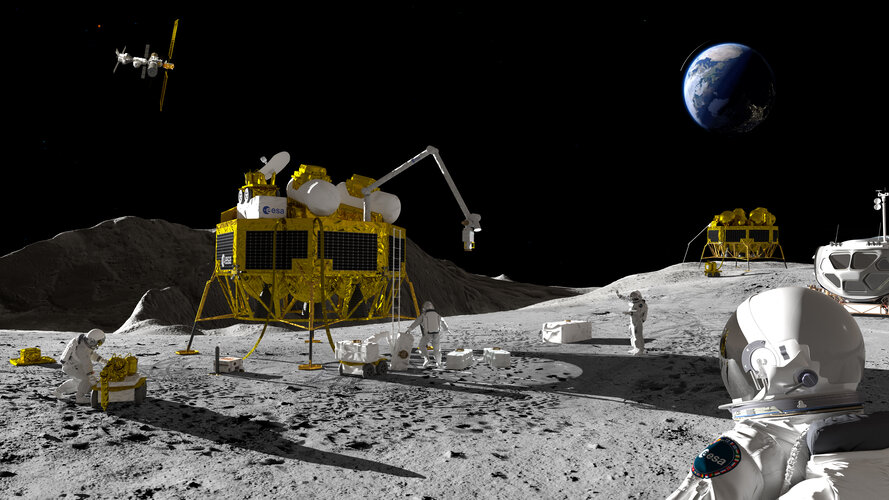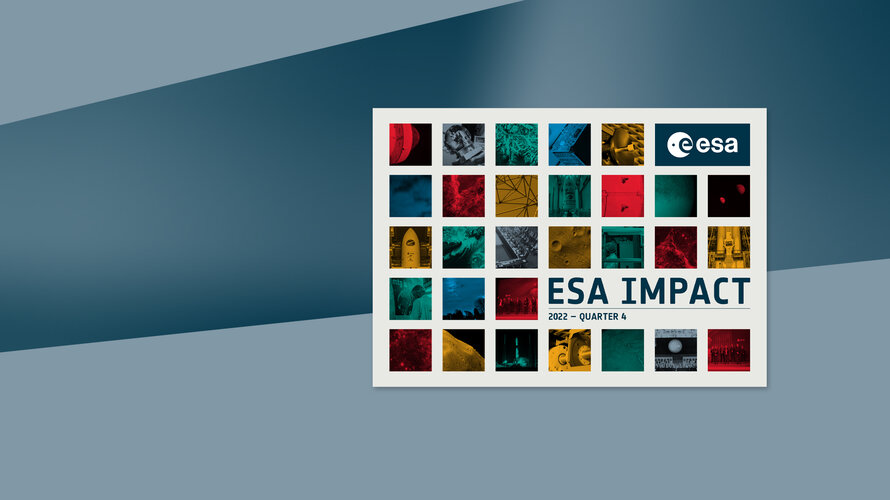
Copernical Team
Russian space chief praises US after ISS coolant leak
 The head of Russian space agency Roscosmos on Tuesday praised Russia-US cooperation at the International Space Station following a major coolant leak from a Soyuz crew capsule.
"Say hello to the entire American team. They proved themselves to be very worthy in this situation and lent us a helping hand," Borisov said, speaking to the Russian crew on board the ISS. "But I hope we will manage o
The head of Russian space agency Roscosmos on Tuesday praised Russia-US cooperation at the International Space Station following a major coolant leak from a Soyuz crew capsule.
"Say hello to the entire American team. They proved themselves to be very worthy in this situation and lent us a helping hand," Borisov said, speaking to the Russian crew on board the ISS. "But I hope we will manage o NASA's InSight Mars lander may have sent its last image to Earth
 The InSight Mars lander has sent what could be its final image to Earth as NASA expects the probe to stop transmitting.
"My power's really low, so this may be the last image I can send. Don't worry about me though: my time here has been both productive and serene. If I can keep talking to my mission team, I will - but I'll be signing off here soon. Thanks for staying with me," the InSi
The InSight Mars lander has sent what could be its final image to Earth as NASA expects the probe to stop transmitting.
"My power's really low, so this may be the last image I can send. Don't worry about me though: my time here has been both productive and serene. If I can keep talking to my mission team, I will - but I'll be signing off here soon. Thanks for staying with me," the InSi Vega-C rocket lost shortly after lift-off in French Guiana
 The European light launcher rocket Vega-C was lost shortly after lift-off from French Guiana on Tuesday with two Airbus satellites on board, the company behind the launch said.
The rocket had been trying to bring into orbit two Earth observation satellites built by Airbus, intended to join an existing network that captures high-quality images of any point on the globe several times a day.
The European light launcher rocket Vega-C was lost shortly after lift-off from French Guiana on Tuesday with two Airbus satellites on board, the company behind the launch said.
The rocket had been trying to bring into orbit two Earth observation satellites built by Airbus, intended to join an existing network that captures high-quality images of any point on the globe several times a day. Future of space engineering is model-based

A hackathon challenged aerospace students to develop a detailed digital system model for a robotic assistant for astronauts on the Moon, able to identify key areas of interest in advance of any humans landing, guide them to their habitat and even rescue any moonwalkers in distress.
The winning team, from France’s Institut Supérieur de l'Aéronautique et de l'Espace, completed their task within just two weeks, using Model Based System Engineering to do so. This method involves creating digital models of space missions to manage their design, construction, test and operation – and has been highlighted by ESA Director General Josef
L3Harris To Acquire Aerojet Rocketdyne
 L3Harris Technologies (NYSE: LHX) and Aerojet Rocketdyne Holdings, Inc. (NYSE: AJRD) together announced the signing of a definitive agreement for L3Harris to acquire Aerojet Rocketdyne for $58 per share, in an all-cash transaction valued at $4.7 billion, inclusive of net debt.
This marks L3Harris' second acquisition announcement of 2022, demonstrating its continued focus on delivering crit
L3Harris Technologies (NYSE: LHX) and Aerojet Rocketdyne Holdings, Inc. (NYSE: AJRD) together announced the signing of a definitive agreement for L3Harris to acquire Aerojet Rocketdyne for $58 per share, in an all-cash transaction valued at $4.7 billion, inclusive of net debt.
This marks L3Harris' second acquisition announcement of 2022, demonstrating its continued focus on delivering crit Enjoy ESA’s Impact over the last quarter!

Enjoy ESA’s Impact over the last quarter!
Welcome to this edition of ESA Impact, an interactive publication covering stories and images from the fourth quarter of 2022.
Viasat's Ka-band in-flight connectivity system achieves STC on Gulfstream G450 aircraft
 Viasat Inc. (Nasdaq: VSAT) report that the Federal Aviation Administration (FAA) approved the company's Ka-band In-flight Connectivity (IFC) solution for Gulfstream G450 aircraft, a large cabin jet often deployed on long-distance, international expeditions.
With this supplemental type certificate (STC) awarded by the FAA, Viasat's Ka-band connectivity system is now available on more than t
Viasat Inc. (Nasdaq: VSAT) report that the Federal Aviation Administration (FAA) approved the company's Ka-band In-flight Connectivity (IFC) solution for Gulfstream G450 aircraft, a large cabin jet often deployed on long-distance, international expeditions.
With this supplemental type certificate (STC) awarded by the FAA, Viasat's Ka-band connectivity system is now available on more than t Voyager Space signs MoU with Canadian Space Agency
 Voyager Space, a global leader in space exploration, and the Canadian Space Agency (CSA) have signed a Memorandum of Understanding (MoU) to jointly explore how the CSA and the Canadian space sector could play a role in the planning and development of Starlab, Voyager's planned commercial space station, and the George Washington Carver Science Park, Starlab's on-orbit laboratory.
This non-b
Voyager Space, a global leader in space exploration, and the Canadian Space Agency (CSA) have signed a Memorandum of Understanding (MoU) to jointly explore how the CSA and the Canadian space sector could play a role in the planning and development of Starlab, Voyager's planned commercial space station, and the George Washington Carver Science Park, Starlab's on-orbit laboratory.
This non-b Measuring gamma-ray bursts' hidden energy unearths clues to the evolution of the universe
 Gamma-ray bursts are the most luminous explosions in the universe, allowing astrologists to observe intense gamma rays in short durations. Gamma-ray bursts are classified as either short or long, with long gamma-ray bursts being the result of massive stars dying out. Hence why they provide hidden clues about the evolution of the universe.
Gamma-ray bursts emit gamma rays as well as radio w
Gamma-ray bursts are the most luminous explosions in the universe, allowing astrologists to observe intense gamma rays in short durations. Gamma-ray bursts are classified as either short or long, with long gamma-ray bursts being the result of massive stars dying out. Hence why they provide hidden clues about the evolution of the universe.
Gamma-ray bursts emit gamma rays as well as radio w Rocket Lab reschedules 1st US launch to January
 Rocket Lab USA, Inc (Nasdaq: RKLB) ("Rocket Lab"), a leading launch and space systems company, has announced the launch window for its first Electron mission from U.S. soil has been rescheduled to January 2023.
The move of the planned launch window from December 2022 to early 2023 was driven by weather and the additional time that the National Aeronautics and Space Administration (NASA) at
Rocket Lab USA, Inc (Nasdaq: RKLB) ("Rocket Lab"), a leading launch and space systems company, has announced the launch window for its first Electron mission from U.S. soil has been rescheduled to January 2023.
The move of the planned launch window from December 2022 to early 2023 was driven by weather and the additional time that the National Aeronautics and Space Administration (NASA) at 
































